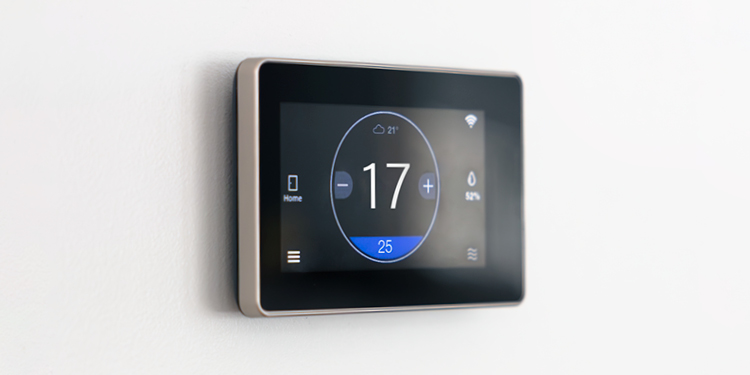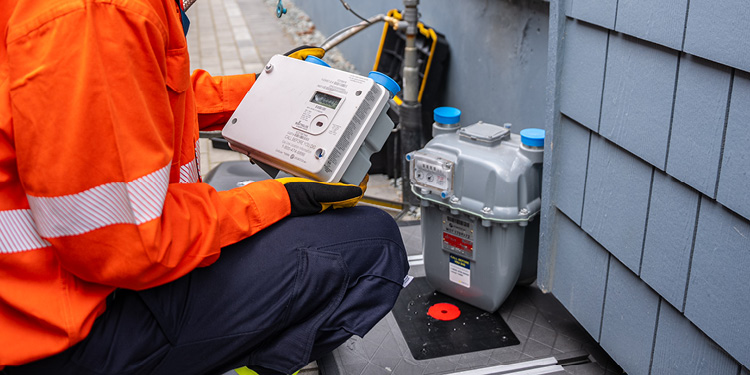Boost your savings: 5 innovative ways we will help you save energy
April 29, 2024
Energy efficiency is one of the most cost-effective ways to lower energy bills, lower emissions and lessen the need to build new energy infrastructure. Over the years, we’ve offered rebates and incentives to our customers on high-efficiency equipment and we’re excited about what’s to come.
Over the next four years, we plan to invest close to $700 million in our conservation and energy-efficiency programs. This is an opportunity for us to develop the next generation of rebates and incentives for our customers.
This means during renovations and energy-efficiency projects, there’s more support to help you cover some of the upfront costs. There will also be new ways to support municipalities and industries with energy-efficiency projects to help them lower their emissions while addressing the urgent need for climate action.
Let’s look at five innovative ways this new funding will help you adopt new technologies and high-efficiency systems that work for your home or business, budget and lifestyle.
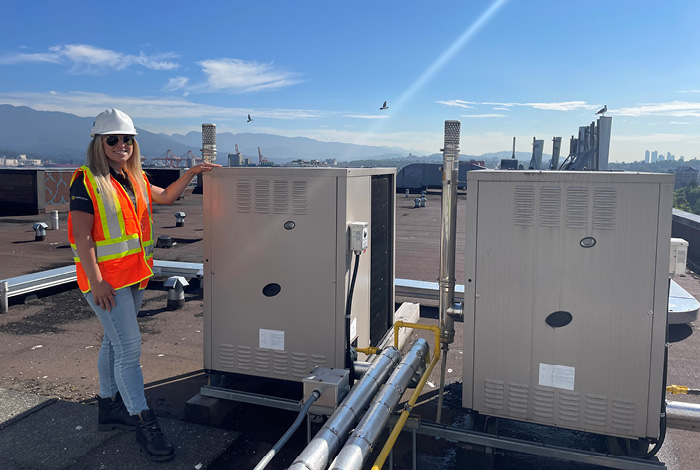
Mila Barbour, program manager of heat pump technologies and her team are working to bring gas heat pumps into homes and buildings across B.C.
1. Gas heat pumps
You may be aware that heat pumps are an energy efficient way to heat and cool your home, but did you know there are heat pumps that run on gas?
We’ve brought gas heat pumps into B.C. to help our customers adopt higher-efficiency technology. These units can achieve more than 100 per cent energy efficiency. They provide space heating and water heating in a home or larger building.
Replacing an aging furnace, boiler and/or hot water system with a gas heat pump will give you a high-efficiency gas option to help save energy and lower your greenhouse gas (GHG) emissions while continuing to use gas in your home or business. You can also designate a portion of your gas as Renewable Natural Gas.1
Before we offer a rebate on a technology, we put it to the test. We first tested these units in larger multi-unit buildings back in 2019. Now, we offer a rebate program to commerical customers. Offering rebates helps you cover some of the upfront costs to install one of these units.
We’re in the process of testing gas heat pumps in B.C. homes. We’re learning more about how gas heat pumps work in a home and what our customers think of the technology. This allows us to gather information to create a rebate program on technology we’re confident in. Once we’re done testing, we’ll be looking at the feasibility of offering a rebate program to homeowners.
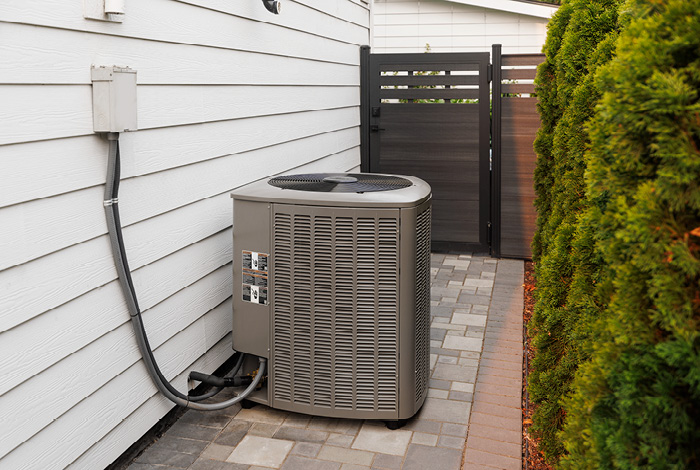
A duel-fuel heating system allows you to pair an electric heat pump with a high-efficiency gas furnace to help customers lower energy use and emissions.
2. Dual-fuel systems
An area we’re excited to dive into is dual-fuel heating systems. A dual-fuel system allows you to pair an electric heat pump with a high-efficiency gas furnace. This gives you access to reliable, affordable energy on colder days while lowering your overall emissions.2
With different pathways to achieve emissions reductions, there are also various considerations including how electric heat pumps work in colder weather. Electric heat pumps can work in various temperatures but installing both a heat pump system with a high-efficiency gas furnace gives you options during extreme weather events in the winter to have an integrated system that will continue to heat your home or business.
We’re testing how dual fuel systems work in homes across the province. This will help us to better understand how these units work together and how we can build a rebate program to best support our customers. For commercial customers, we’ll be offering rebates on dual-fuel rooftop units. These units can provide heating and cooling in a building using both electricity and gas.
We’re here to help you adopt new technologies and high-efficiency systems that work for your home or business, budget and lifestyle.
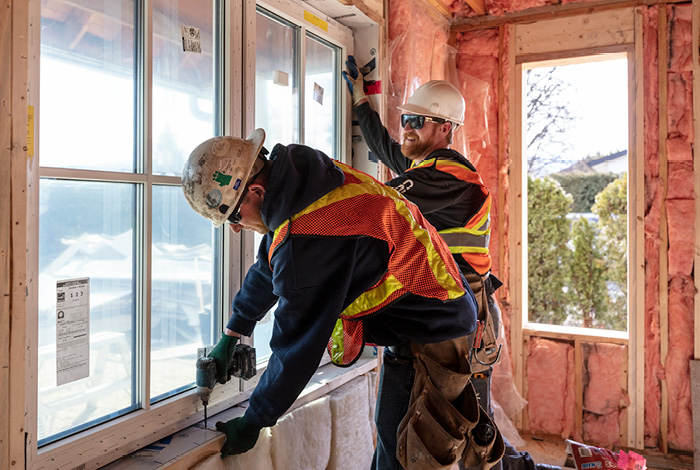
Replacing windows and doors, upgrading insulation and adding air sealing can make a home more airtight and energy efficient.
3. Deep energy retrofits
If you live in an older home, you may notice drafts through the windows, doors or walls. This is because a significant number of buildings in B.C. were built before energy efficiency was included in the National Energy Code for Buildings in 1997. Also, as a building gets older, it typically needs to be repaired and maintained to keep it as comfortable and energy efficient as possible.
With many of these older buildings remaining in active use for the next 20 years or more, we’re thinking about how we can support our customers in making energy-efficiency upgrades. This is why we’re exploring the potential for deep energy retrofits.
With a deep energy retrofit, we’re looking at addressing energy-efficiency concerns with aging buildings. This includes upgrading insulation, replacing windows and doors and adding air sealing to make the building envelope of existing homes and buildings better. It also makes it more airtight and energy efficient for years to come. As part of these retrofits, heating, hot water and ventilation systems can also be upgraded to high efficiency so they use less energy. By targeting improvements in building envelope and heating systems, the goal is to reduce energy use and GHG emissions.
Currently, we offer rebates for insulation and window and door upgrades to help you improve the energy efficiency in your homes.
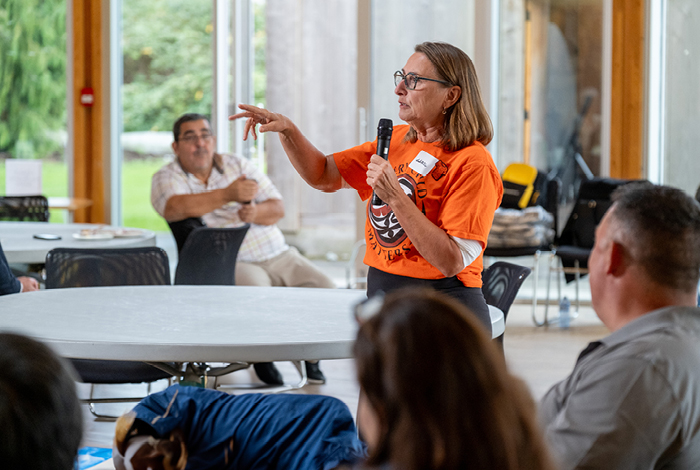
Carol Suhan, manager of community programs and her team are working together with Indigenous communities on energy efficiency upgrades.
4. Working with Indigenous communities
One of the ways we continue to work with Indigenous communities is through energy-efficiency projects. For the past five years, we’ve offered rebates specific to Indigenous communities and learned more about the unique challenges they face. According to census data from 2016, about 44 per cent of First Nations people living on-reserve land reside in homes that are in need of major repairs.3 This unfortunately is a consequence of the historical policies from more than 100 years ago, yet are still affecting community members living in these homes today.
Now with more funding available, it means we can work together with Indigenous communities to make homes more energy efficient and bring them up to current building codes. It’s an opportunity for us to collaborate with Indigenous Peoples across the province and tailor rebates and programs for their communities.
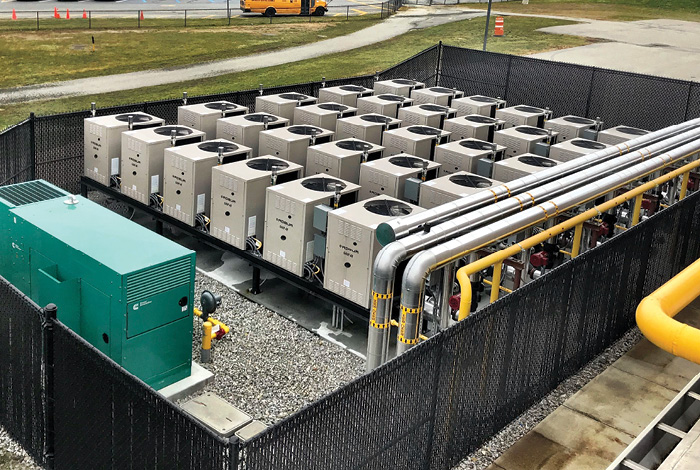
We’ve worked with many organizations who have taken the initiative to upgrade to high-efficiency systems, including gas heat pumps (pictured here) to help them reduce energy use and GHG emissions.
5. Commercial and industrial sectors
Commercial and industrial organizations play a key role in B.C.’s economy but their operations can be a significant source of GHG emissions. We’ve worked with many organizations who have taken the initiative to upgrade to high-efficiency systems and it makes a difference. Reducing energy use and GHG emissions is a key pillar in FortisBC’s own Clean Growth Pathway to 2050 and supports the province’s plan of building a cleaner economy that benefits everyone.
Homes and buildings account for just over 10 per cent of the B.C.’s GHG emissions.4 To address this, the government of B.C. has set a target of lowering GHG emissions in the building and communities sector by 59 to 64 per cent of 2007 levels by 2030. For industry they set a target to lower emissions by 38 to 43 per cent. We plan to support our customers in achieving this target by offering more one-on-one support. This allows us to collaborate on what energy-efficiency measures will work best for each organization so we can provide rebates.
We continue to invest in programs that help identify low-cost and no-cost ways for organizations to save energy while also offering more comprehensive programs like our custom efficiency program. These options are meant to provide flexibility to our customers while providing them with high-efficiency technologies and systems to optimize their operations.
Let’s work together
We’re looking forward to working with our customers in new ways in the coming years. Our priority is to make sure there are high-efficiency gas options available to help you lower energy use, monthly bills and GHG emissions.
Be the first to know about new rebate programs by signing up for our monthly newsletter, Energy Moment.
1Renewable Natural Gas (also called RNG or biomethane) is produced in a different manner than conventional natural gas. It is derived from biogas, which is produced from decomposing organic waste from landfills, agricultural waste and wastewater from treatment facilities. The biogas is captured and cleaned to create Renewable Natural Gas.
2When compared to standard efficiency, 80 per cent annual fuel utilization efficiency, gas furnaces and boilers.
3Supporting First Nations in British Columbia to implement culturally-appropriate and energy-efficient new construction, UBC, pg. 10.
4CleanBC Roadmap to 2030, page 38.

